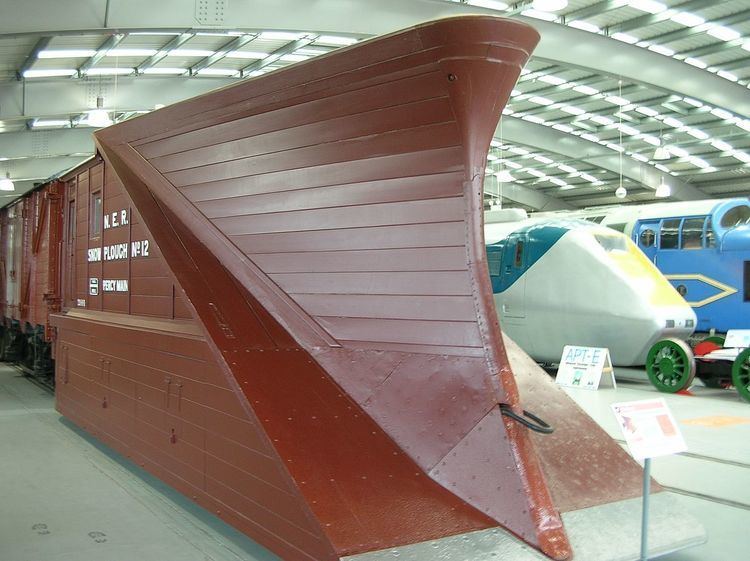 | ||
The wedge plow or Bucker plow was first developed by railroad companies to clear snow in the American West. The wedge plow forces snow to the sides of the tracks and therefore requires a large amount of force due to the compression of snow. The wedge plow is still in use today in combination with the high-maintenance, rotary snowplow.
Contents
Function
Three features are required for optimum performance:
Well-designed wedge plows work best at speeds which accelerate the snow first upward and transitioning to a horizontal acceleration casting the snow far enough from the track to avoid creating high, vertical snowbanks which would leave the cleared track a sheltered deposition site for wind-blown snow.
History
Early roads were often rolled rather than plowed to compact accumulated snow into a surface suitable for sleighs drawn by draft animals. Rail transportation brought the requirement for snow removal by plows. In the 1840s railway companies began using bucker plows to remove snow from railways. The first incarnation of the wedge plow was the Bucker Plow which were made of wood. Because of the amount of capital invested in railroads, the railways were required to be functional year-round. Because of this, snow needed to be cleared from the railways in an efficient manner. The Wedge Plow was patented by Charles Lowbaert to keep railways functional during the winter.
The wedge plow typically required several locomotives to propel the plow with enough force to push through the snow. High speeds of up to 50 mph (80 km/h) were required to achieve an adequate propulsion for the removal of snow. Sometimes, as many as 14 locomotives were used in the process. In the case where snow was tightly packed or frozen, manual labor might still be used to clear the tracks. The process of 'ramming' through snow was accounted by historically as follows.
"The pushing and backing of the engines made a din unequalled since the blacksmithy of the Cyclops. By some hocus pocus the seven engines were made to pull togethers. After three hours of toil-there was a tremendous jerk, a forward movement of a few moments and we were abreast of the station."
Henry David Thoreau also noted in his poems the "steady and cheerful valor of the men who inhabit the snow-plough for their winter quarters...and [to] behold the ploughmen covered with snow and rime, their heads peering above the mould-board."
Plowing was therefore a dangerous job with the chance of derailing the train in the process. Wedge plows are still currently used by railways as a less expensive method for clearing snow drifts from the tracks. During heavier snow conditions, rotary snowplows are used.
